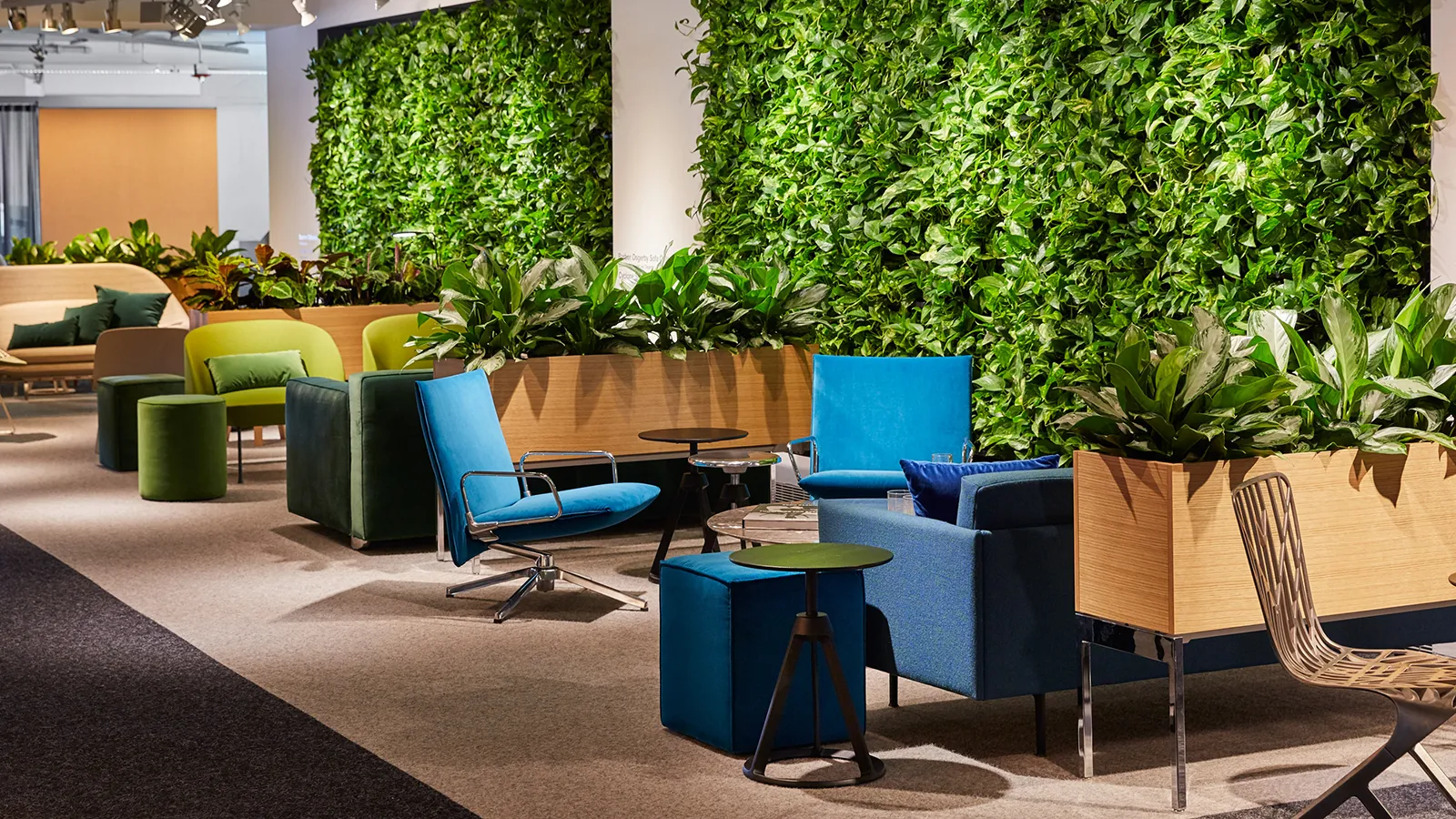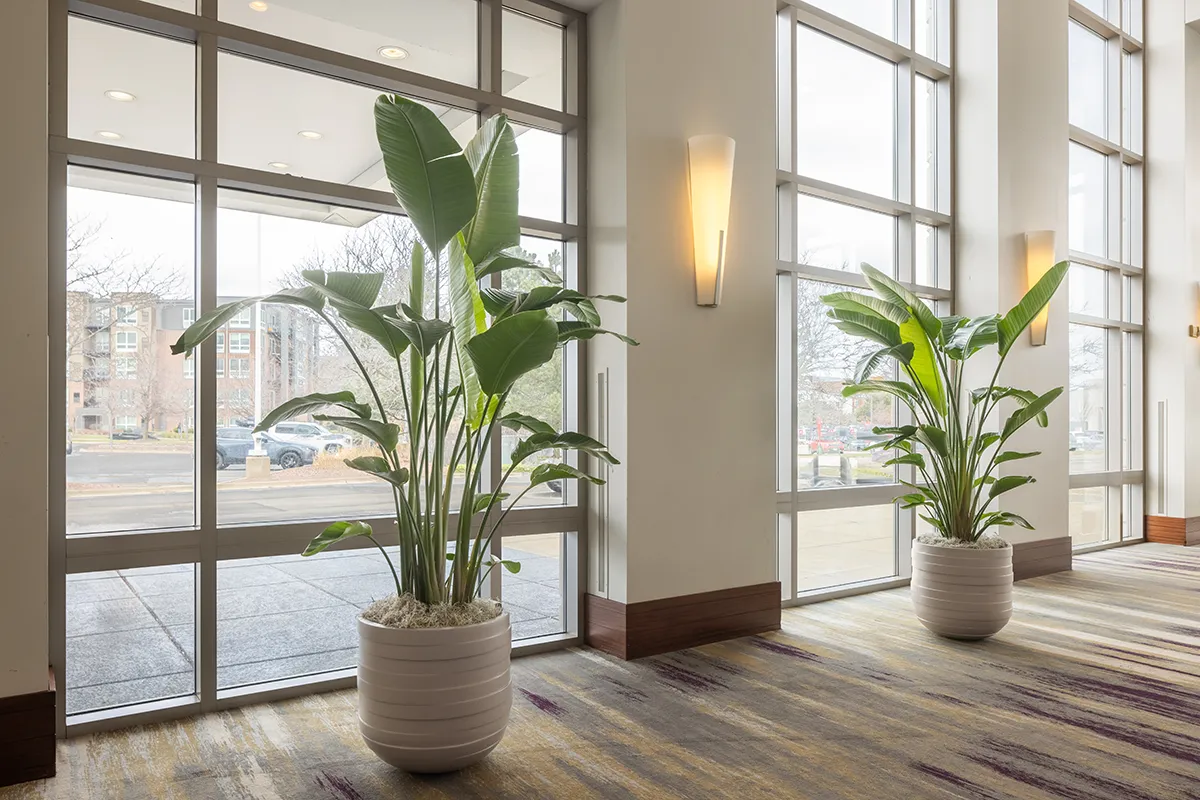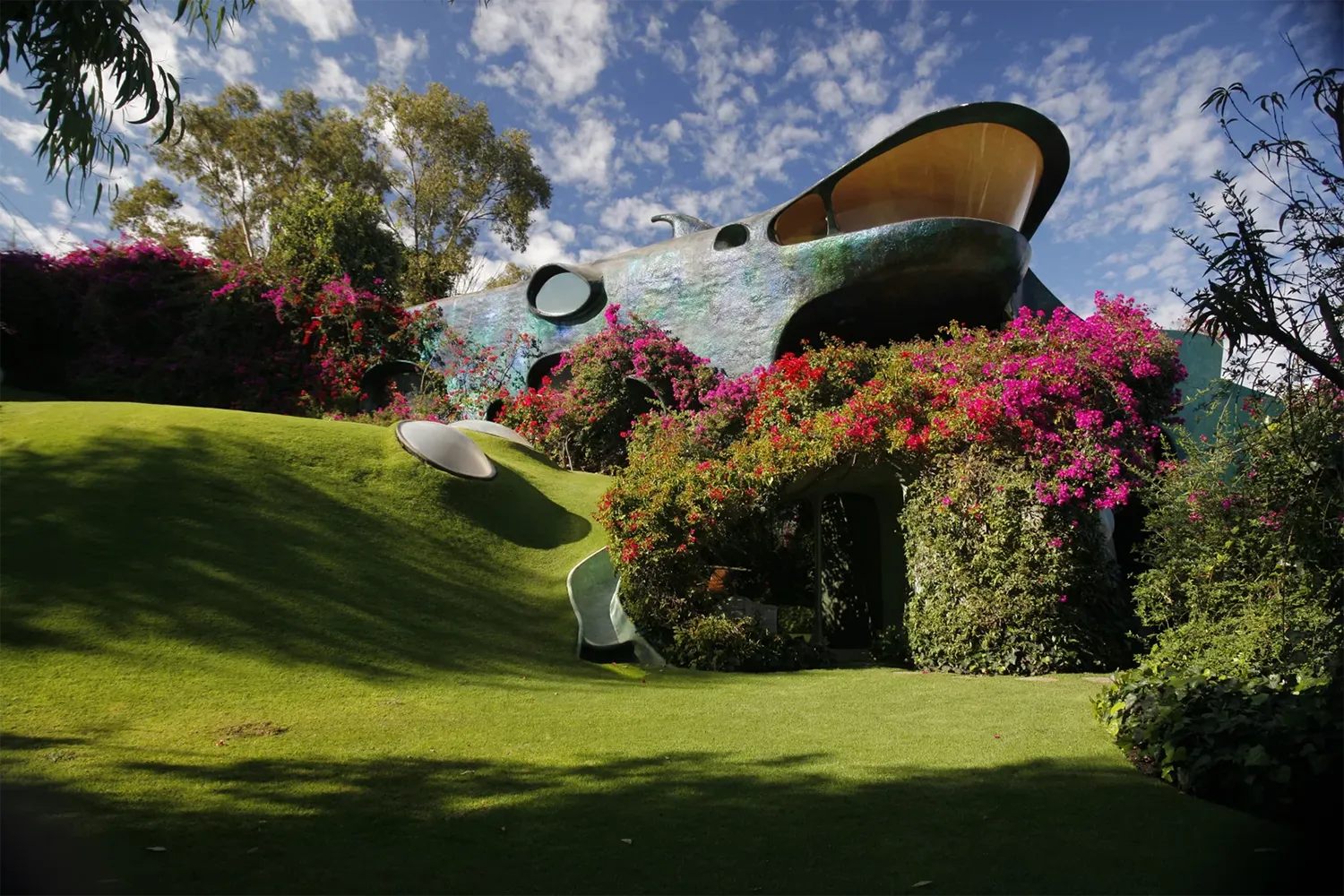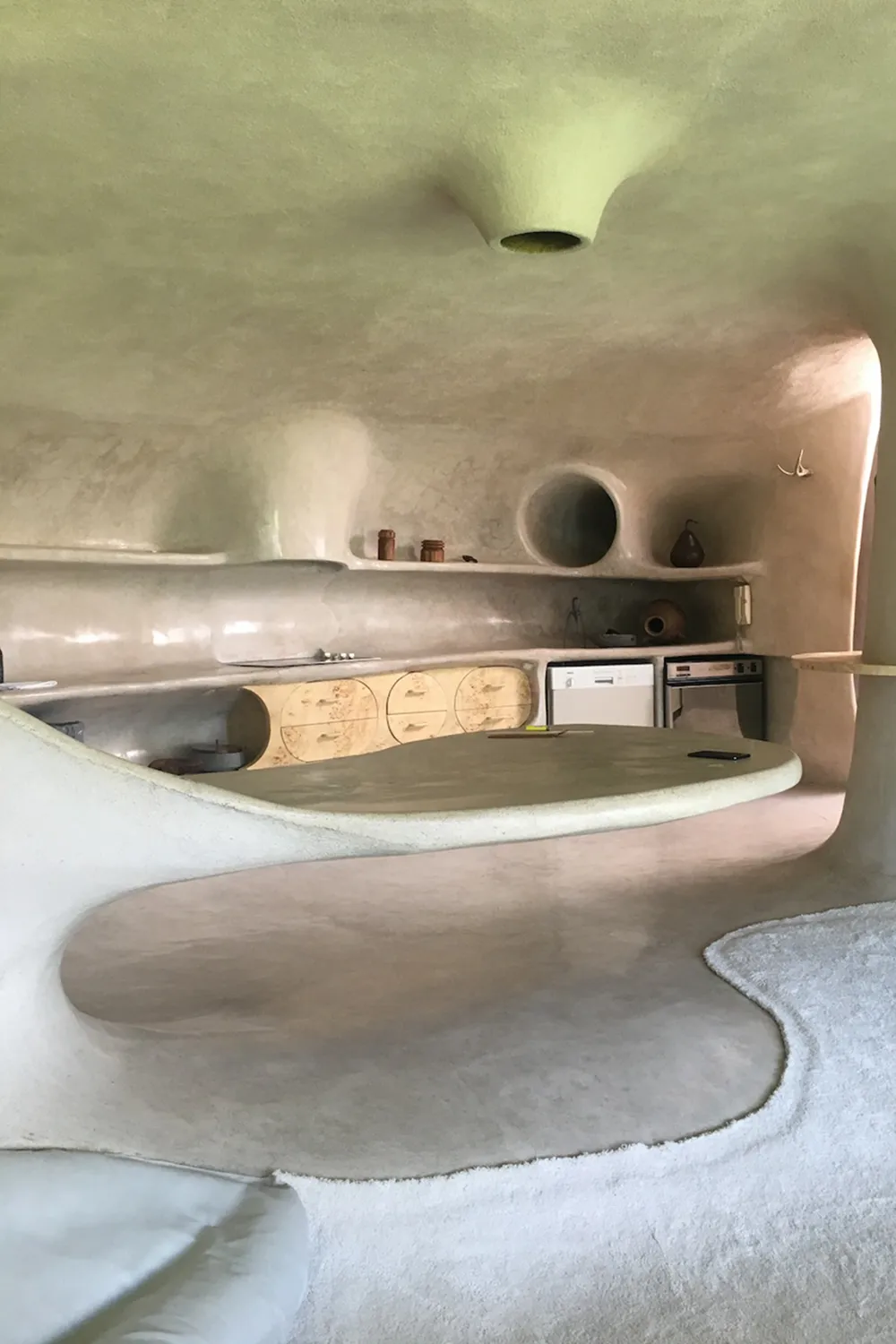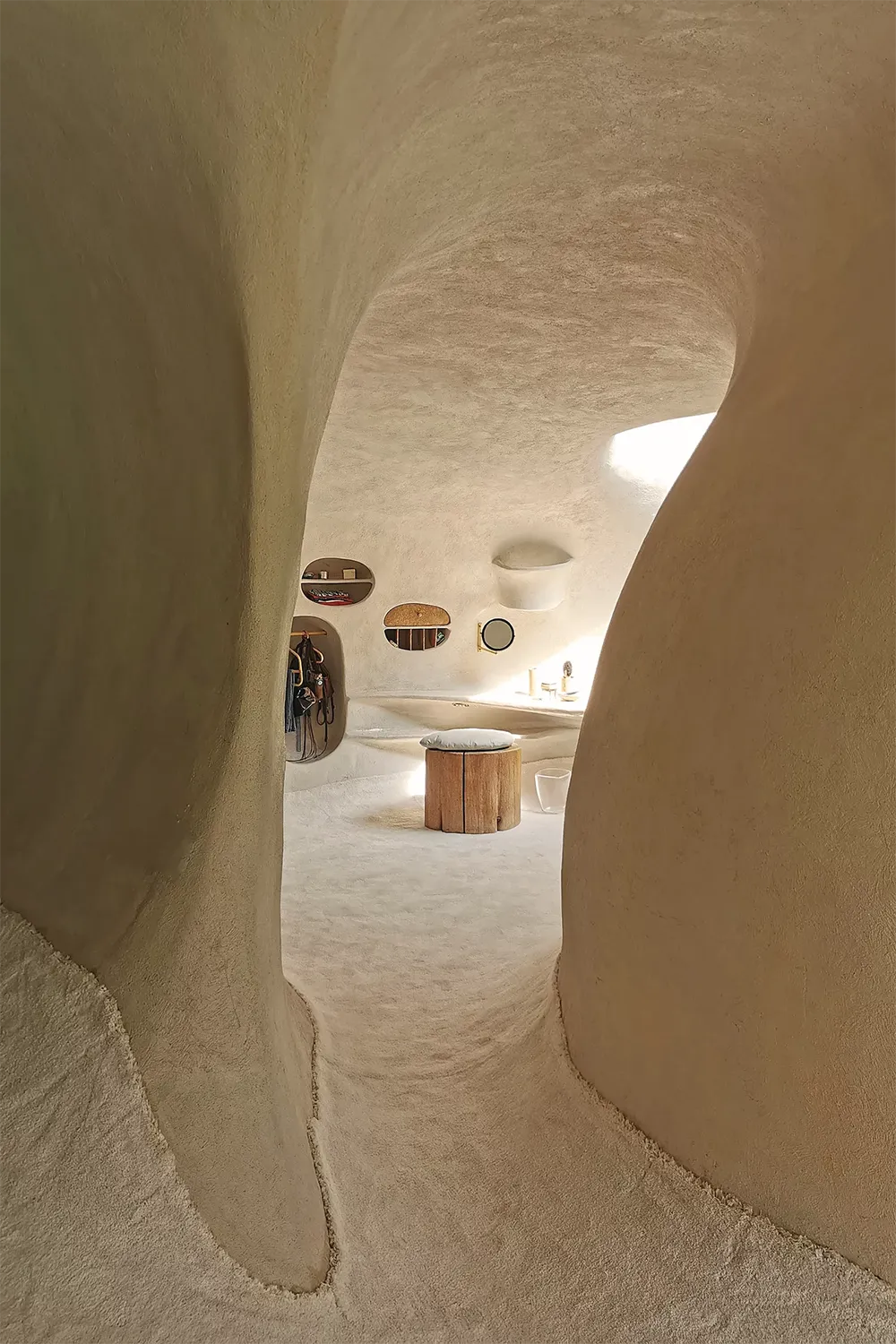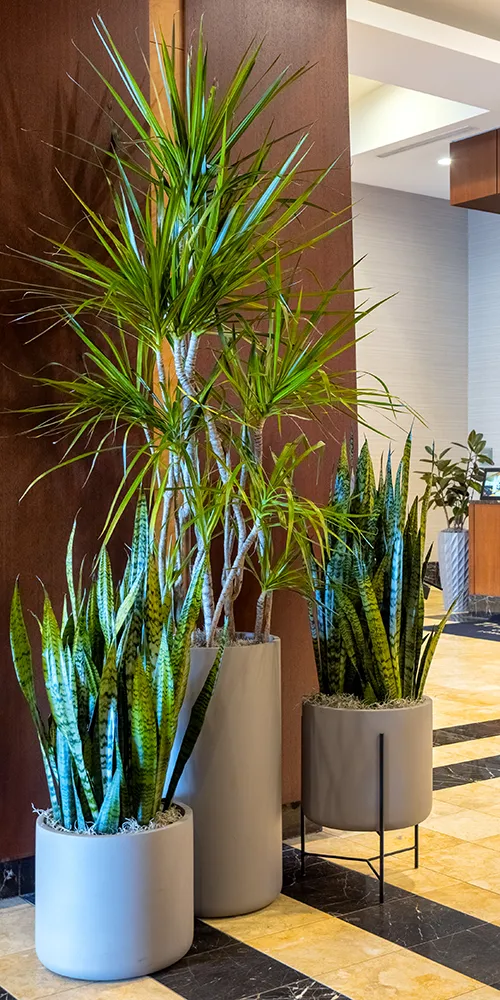Biophilic Design Benefits
Plants in an office are never just plants. They shape how people feel, focus, and interact. A carefully placed living wall softens the sharp lines of corporate interiors, while seasonal greenery transforms lobbies into places that feel alive, connected to the rhythms of the city outside.
But greenery in commercial spaces isn’t only about aesthetics. Research shows that biophilic design—bringing natural elements indoors—reduces stress, improves air quality, and increases productivity. In a city like Chicago, where winters are long and gray, these benefits are more than luxuries; they’re necessities for well-being.
At Amlings Interior Landscape, we design, install, and care for plants with the same attention architects give to steel or stone. Our work is about more than placement—it’s about creating an environment that evolves with the people who move through it every day.
The science backs it up. Research from the International Living Future Institute and the American Society of Interior Designers shows that biophilic design—integrating natural elements into the built environment—can reduce stress by up to 15%, increase productivity by as much as 6%, and improve overall well-being. The World Green Building Council also reports that workers in spaces with natural light and plants experience 30% fewer sick days. In a city like Chicago, where daylight is scarce in winter and high-rises dominate the horizon, those benefits aren’t just aesthetic—they’re essential.
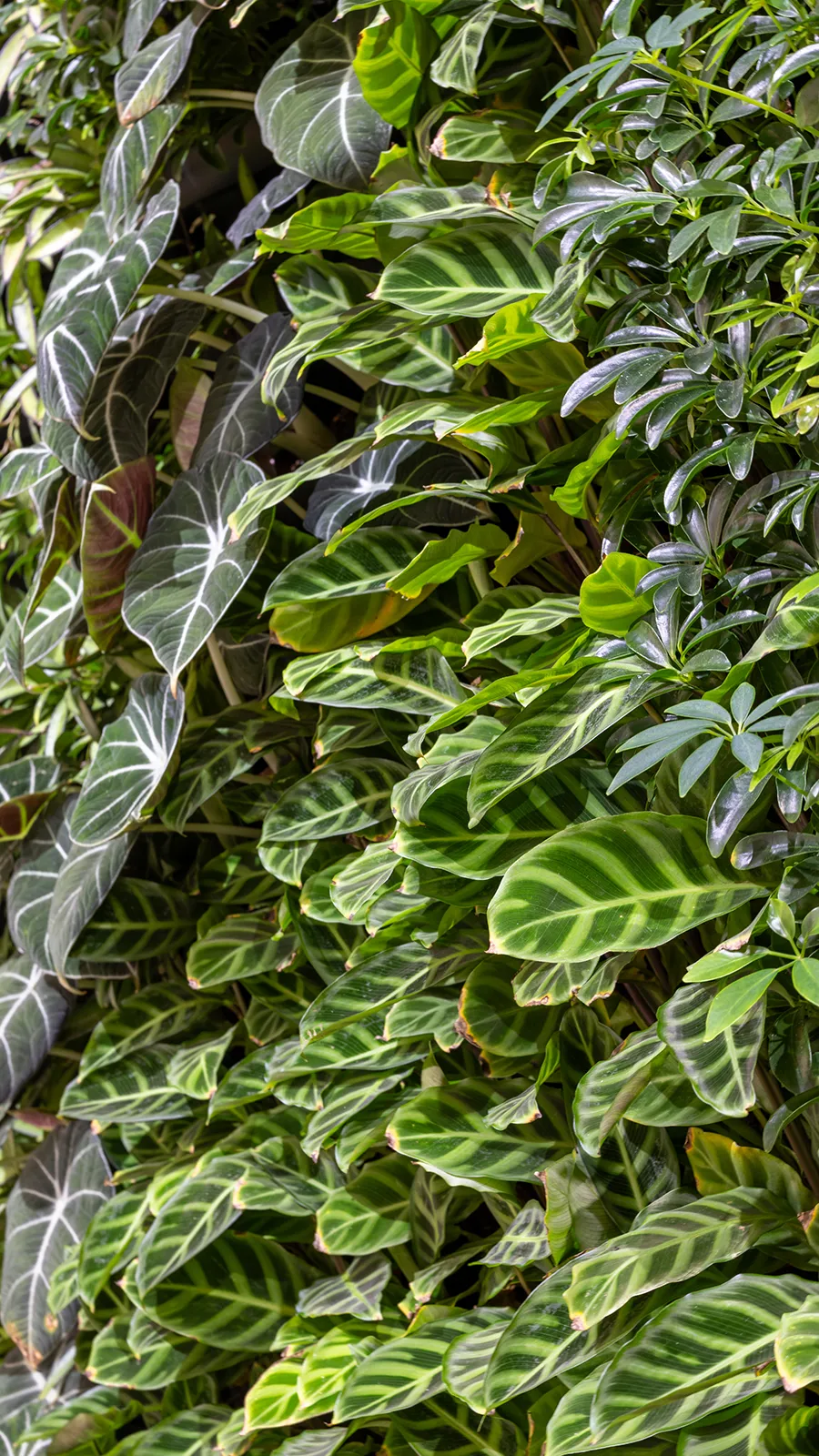
But at Amlings, biophilic design is not a formula. It’s a philosophy. Our designers think like architects, considering sightlines, light, and flow. Every installation—whether a dramatic living wall in a corporate lobby or a collection of desk plants in a tenant suite—is tailored to reflect the property’s architecture, brand, and culture. We curate species that thrive in Chicago’s indoor climate and pair them with containers that echo the building’s material palette, creating a cohesive, elevated look that complements the surrounding design.
For more than a century, we’ve partnered with Chicago’s most distinguished office buildings, hospitality brands, and property managers to bring nature indoors with precision and care.
And just like people, plants need ongoing care. Each project is nurtured through regular maintenance, thoughtful seasonal updates, and expert horticultural support. That’s how greenery continues to thrive, even in high-traffic spaces where other details fade with time.
Our horticultural specialists provide proactive, museum-quality care—monitoring soil, light exposure, and moisture to keep every plant healthy and flawless. It’s this attention to detail that allows greenery to endure, even in the busiest corporate settings. For property managers and owners, that consistency protects not just the investment but the impression. A single wilted leaf can change how a space feels; our job is to make sure every detail remains impeccable.
Beyond the visual impact, greenery contributes to the operational and cultural health of a workspace. Plants naturally filter air pollutants and balance humidity—making interiors healthier for employees and guests alike. The U.S. Green Building Council notes that biophilic enhancements can contribute to LEED credits and sustainability goals, while simultaneously improving employee satisfaction and retention. In today’s workplace, where hybrid work has reshaped how people engage with offices, environments that feel inviting and human-centered have become a competitive advantage.
Chicago may be defined by its skyline, but it’s the living details inside that give workplaces their pulse. When light catches the curve of a leaf or a burst of green brightens a lobby corner, something subtle happens—spaces become warmer, more inspiring, and more alive.
At Amlings, we bring that life to every project. With design-forward thinking, meticulous workmanship, and a century of horticultural expertise, we help Chicago’s most iconic buildings embody the quiet power of nature. Because when spaces thrive, so do the people within them.
In fact the hidden value of green isn’t hidden at all—it’s felt every day.

